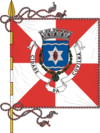Covilhã
The Jewish Community of the city of Covilhã, located 20 Km away from Belmonte was, since the 12th century and until its dilution, the biggest and most important one in the Serra da Estrela Region as well as one of the greatest and strongest ones in Portugal.
As can be seen on the fifteenth-century city plant, there existed, at the end of the 15th century, at least three Jewish cores. One (the oldest) within the walls next to the Portas do Sol (Doors of the Sun); the second one was located on the exterior part of the walls confining with them. The third one would correspond to Jewish quarters located near the city (Refúgio – Meia Légua).
This last one (Refúgio – Refuge) must have its name linked to an area that most likely was a refuge for persecuted Jews.
A town boosting the wool work
The importance of the members of the Jewish Community of Covilhã or their descendants can be noted on six major facts:
The percentage of the area and population of the city occupied by Jewish quarters (around 30 in the late 15th century);
The subsequent development of the wool industry, which had the contribution of many important figures from that social and ethnic background;
The quantity and quality of portuguese Jews or of Jewish origin from Covilhã linked to the Age of Discovery and the Portuguese expansion (see “Discoveries Rout” brochure), unique case in Portugal: Mestre José Vizinho, cosmography specialist of D.João II; Rui Faleiro, artificer of the Ferdinand Magellan’s circumnavigation voyage; Francisco Faleiro, great cosmography specialist placed at the service of Spain, author of “Tratado del esphera y del arte del marear”; possibly even Pêro da Covilhã, explorer and someone who helped prepare the sea route to India, was of new christian origin; the famous João Ramalho, first scout in Brasil, would also be of Jewish origin from Covilhã;
The financial volume of rents paid by the town in the late 15th century (42500 reis – National currency at the time)
The national historical references made for centuries, regarding the judaism in Covilhã, and recorded since the charter of 1186, which are constant and diversified;
The numerous presence of the more known (although not exclusive) surnames of new christian origin amongst the current inhabitants of the city (ex.: Mendes, Cardoso, Costa, Pereira, Henriques, Cruz, Dias, Baltazar, Vizinho, Gomes, Ramalho, Nunes, Flores, Franco, Vaz, Pinho, Teles, Faleiro, Elias, Mesquita, Oliveira, Ranito, Benjamim etc.).
Already in the 20th century, the third community of the country was reestablished in Covilhã (July 1929) where existed 6000 Crypto-Jews. A Synagogue named Sha'ari kabbalah (“Tradition Doors”) was built. With the implantation of the dictatorship in 1932, the Jewish missionary activity between the Crypto-Jews decreased in Covilhã, as well as in the rest of the country.
Until the 20th century, in the middle of which it was demolished, existed the Synagogue building, located near the present Santiago Church.
The investigation of the complaints against the Crypto-Jews and judaizers were made in the Santa Maria and Madalena Churches. The first one is visitable.
The connection between the Christian part of the city and the Jewish quarter was made through five of the ten doors or wicket doors of the old wall.
The Jewish community of Covilhã was from the 12th century until the beginning of the 20th century, the largest and most important in the Serra da Estrela region and one of the strongest in Portugal.
The community of this region was mainly engaged in trade and handicrafts, but also in agricultural activities, and was mainly the driving force behind the wool industry.
In the city, at the end of the XV century, there were at least two Hebrew nuclei. The first one (the oldest)inner walls, next to Portas do Sol; The second, on the outside, bordering with the doors of the village surrounding the area that includes Rua do Ginasio Clube and Rua das Flores.
This last street (Rua das Flores) is characterized by the existence of narrow roads, without planning and with narrow public spaces. The buildings are narrow in the facades and high, built to the personal tastes of the owners and with appendicular appendages.
Featuring in general the facades with Jewish architectural features, such as a large door and a small door, unlatched windows, bevelled doors or jambs.







